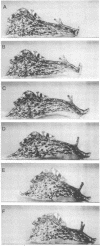Abstract
A form of aversive classical conditioning is described in which a chemosensory conditioned stimulus rapidly acquires the ability to modulate a defensive response (escape locomotion). Because Aplysia show both sensitization and classical conditioning, it is now possible to begin to examine the relationship between nonassociative and associative learning on behavioral and cellular levels.
Full text
PDF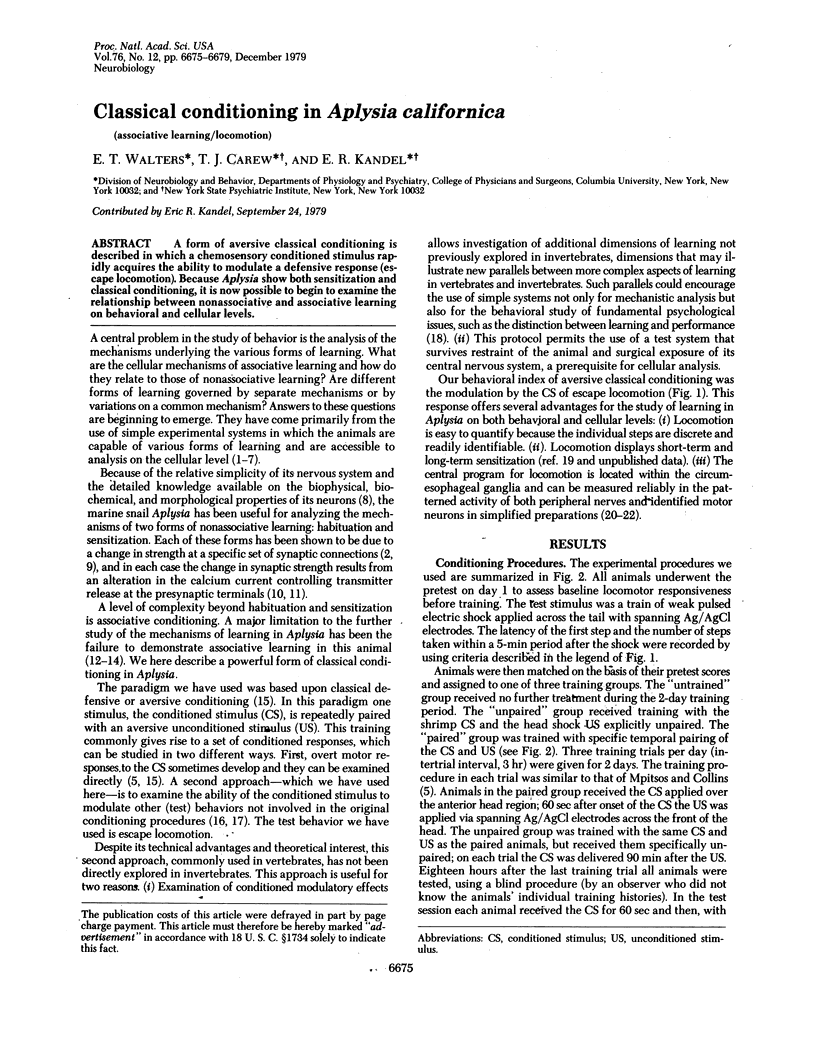
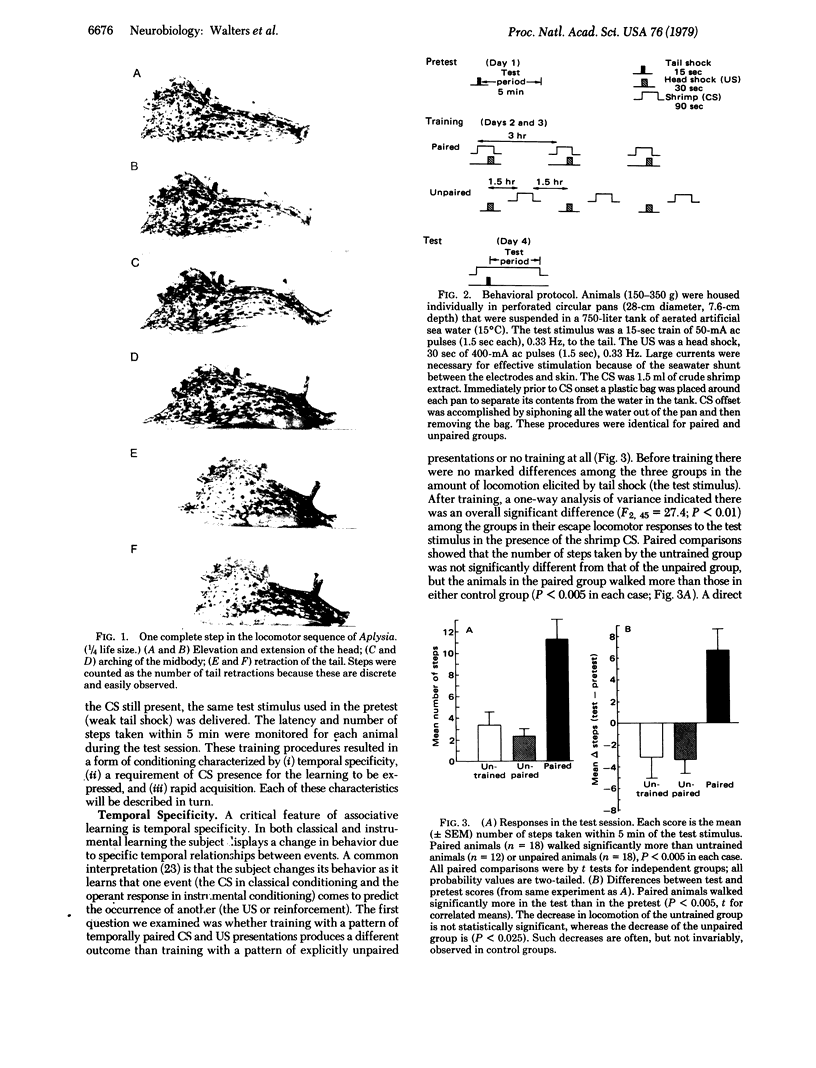
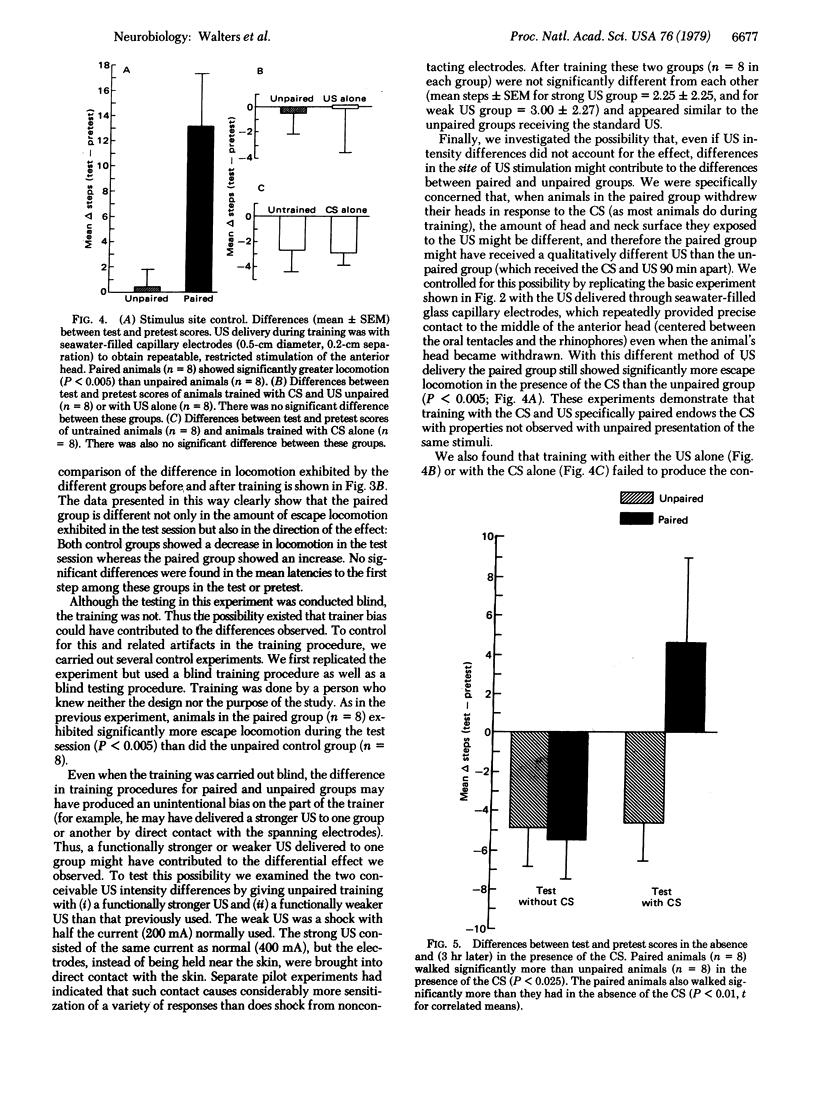
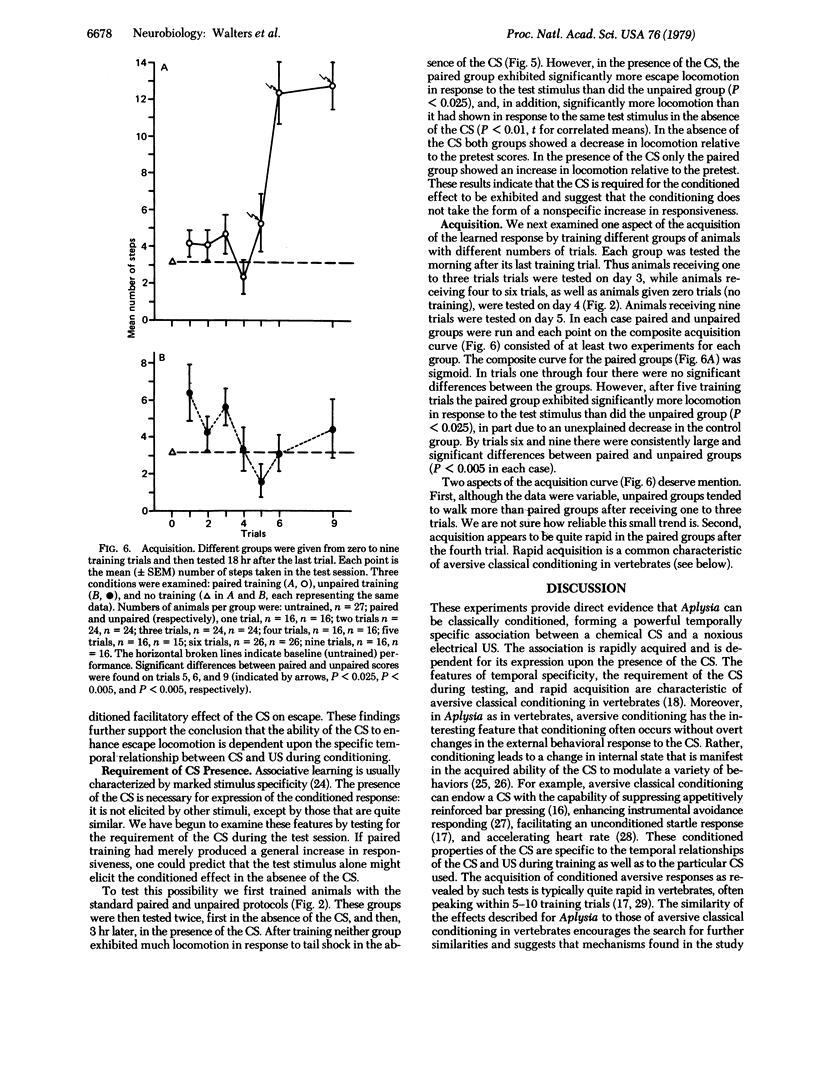
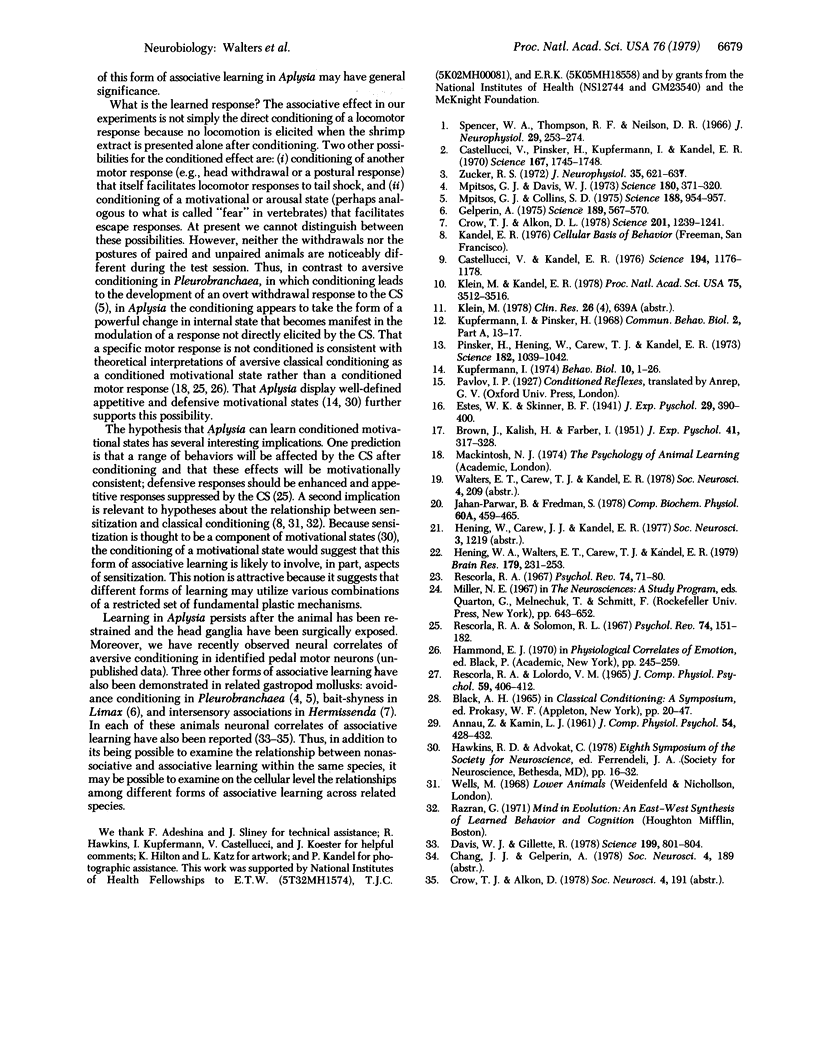
Images in this article
Selected References
These references are in PubMed. This may not be the complete list of references from this article.
- ANNAU Z., KAMIN L. J. The conditioned emotional response as a function of intensity of the US. J Comp Physiol Psychol. 1961 Aug;54:428–432. doi: 10.1037/h0042199. [DOI] [PubMed] [Google Scholar]
- BROWN J. S., KALISH H. I., FARBER I. E. Conditioned fear as revealed by magnitude of startle response to an auditory stimulus. J Exp Psychol. 1951 May;41(5):317–328. doi: 10.1037/h0060166. [DOI] [PubMed] [Google Scholar]
- Castellucci V., Kandel E. R. Presynaptic facilitation as a mechanism for behavioral sensitization in Aplysia. Science. 1976 Dec 10;194(4270):1176–1178. doi: 10.1126/science.11560. [DOI] [PubMed] [Google Scholar]
- Castellucci V., Pinsker H., Kupfermann I., Kandel E. R. Neuronal mechanisms of habituation and dishabituation of the gill-withdrawal reflex in Aplysia. Science. 1970 Mar 27;167(3926):1745–1748. doi: 10.1126/science.167.3926.1745. [DOI] [PubMed] [Google Scholar]
- Crow T. J., Alkon D. L. Retention of an associative behavioral change in Hermissenda. Science. 1978 Sep 29;201(4362):1239–1241. doi: 10.1126/science.694512. [DOI] [PubMed] [Google Scholar]
- Davis W. J., Gillette R. Neural correlate of behavioral plasticity in command neurons of Pleurobranchaea. Science. 1978 Feb 17;199(4330):801–804. doi: 10.1126/science.622572. [DOI] [PubMed] [Google Scholar]
- Gelperin A. Rapid food-aversion learning by a terrestrial mollusk. Science. 1975 Aug 15;189(4202):567–570. doi: 10.1126/science.1145215. [DOI] [PubMed] [Google Scholar]
- Hening W. A., Walters E. T., Carew T. J., Kandel E. R. Motorneuronal control of locomotion in Aplysia. Brain Res. 1979 Dec 28;179(2):231–253. doi: 10.1016/0006-8993(79)90441-4. [DOI] [PubMed] [Google Scholar]
- Klein M., Kandel E. R. Presynaptic modulation of voltage-dependent Ca2+ current: mechanism for behavioral sensitization in Aplysia californica. Proc Natl Acad Sci U S A. 1978 Jul;75(7):3512–3516. doi: 10.1073/pnas.75.7.3512. [DOI] [PMC free article] [PubMed] [Google Scholar]
- Kupfermann I. Feeding behavior in Aplysia: a simple system for the study of motivation. Behav Biol. 1974 Jan;10(1):1–26. doi: 10.1016/s0091-6773(74)91644-7. [DOI] [PubMed] [Google Scholar]
- Mpitsos G. J., Collins S. D. Learning: rapid aversive conditioning in the gastropod mollusk Pleurobranchaea. Science. 1975 May 30;188(4191):954–957. doi: 10.1126/science.1138366. [DOI] [PubMed] [Google Scholar]
- Mpitsos G. J., Davis W. J. Learning: classical and avoidance conditioning the mollusk Pleurobranchaea. Science. 1973 Apr 20;180(4083):317–320. doi: 10.1126/science.180.4083.317. [DOI] [PubMed] [Google Scholar]
- Pinsker H. M., Hening W. A., Carew T. J., Kandel E. R. Long-term sensitization of a defensive withdrawal reflex in Aplysia. Science. 1973 Dec 7;182(4116):1039–1042. doi: 10.1126/science.182.4116.1039. [DOI] [PubMed] [Google Scholar]
- RESCORLA R. A., LOLORDO V. M. INHIBITION OF AVOIDANCE BEHAVIOR. J Comp Physiol Psychol. 1965 Jun;59:406–412. doi: 10.1037/h0022060. [DOI] [PubMed] [Google Scholar]
- Rescorla R. A. Pavlovian conditioning and its proper control procedures. Psychol Rev. 1967 Jan;74(1):71–80. doi: 10.1037/h0024109. [DOI] [PubMed] [Google Scholar]
- Rescorla R. A., Solomon R. L. Two-process learning theory: Relationships between Pavlovian conditioning and instrumental learning. Psychol Rev. 1967 May;74(3):151–182. doi: 10.1037/h0024475. [DOI] [PubMed] [Google Scholar]
- Spencer W. A., Thompson R. F., Neilson D. R., Jr Decrement of ventral root electrotonus and intracellularly recorded PSPs produced by iterated cutaneous afferent volleys. J Neurophysiol. 1966 Mar;29(2):253–274. doi: 10.1152/jn.1966.29.2.253. [DOI] [PubMed] [Google Scholar]
- Zucker R. S. Crayfish escape behavior and central synapses. II. Physiological mechanisms underlying behavioral habituation. J Neurophysiol. 1972 Sep;35(5):621–637. doi: 10.1152/jn.1972.35.5.621. [DOI] [PubMed] [Google Scholar]



